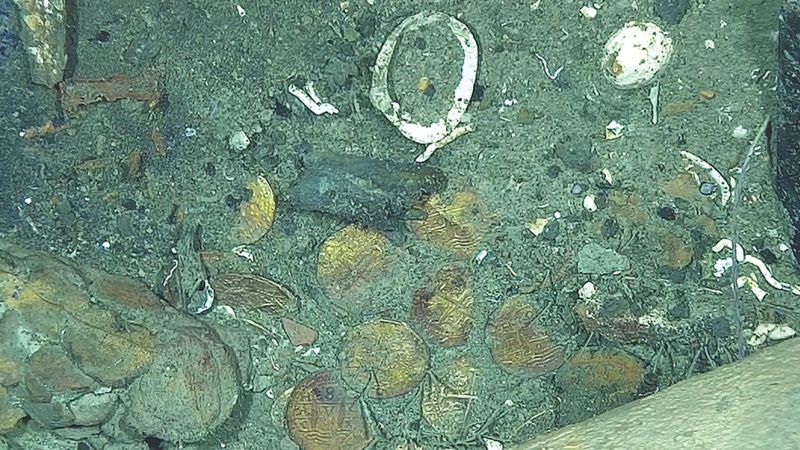In a recent development regarding maritime archaeology and the recovery of historical artifacts, new research has shed light on gold coins discovered within a shipwreck off the coast of Colombia. This significant finding bolsters the theory that the vessel in question is likely the infamous San José galleon. The San José, a 300-year-old Spanish warship, is believed to harbor artifacts valued at billions of dollars, which has made it a focal point for both historians and treasure hunters alike.
Employing advanced underwater technology, scientists utilized an unmanned underwater vehicle to survey the wreck. Their efforts were documented in a recent study published in the esteemed journal Antiquity. The decryption of the site revealed captivating images of the cargo, particularly focusing on the gold coins that have been meticulously reconstructed in three dimensions using photogrammetry techniques. Notably, these coins displayed a Jerusalem cross and heraldic motifs reflecting the crowns of the Spanish monarchs of Castile and León, lending credence to their historical context.
In addition to visual characteristics, the research uncovered minting symbols which confirmed that these coins originated in Lima, Peru, with a date of 1707 inscribed upon them. This crucial evidence indicates that the shipwreck occurred post this date, aligning with historical timestamps associated with the San José’s ill-fated voyage.
As recorded in historical documentation, the San José was an integral part of a shipping fleet known as the Flota de Tierra Firme. This fleet consisted of several vessels departing from Peru in 1707, all laden with royal treasures bound for Spain. Tragically, the San José met its end off the Colombian coast during a confrontation with British naval forces in 1708, preventing it from fulfilling its intended journey.
The coins recovered from the wreckage significantly reinforce the theory that this vessel is indeed the San José, colloquially referred to as the “holy grail of shipwrecks.” Lead researcher Daniela Vargas Ariza, affiliated with Colombia’s National Institute of Anthropology and History (ICANH), provided insights into the currency of the time, explaining that these handmade, irregularly shaped coins—known as cobs in English and macuquinas in Spanish—formed the primary monetary system in the Americas for more than two centuries.
Further emphasizing the historical importance, Vargas Ariza elaborated on the significance of the Tierra Firme Fleet, which held a pivotal monopoly on the transportation of royal treasures between South America and the Iberian Peninsula. The discovery of the San José presents a rare window into the dynamics of eighteenth-century maritime trade and the complexities of shipping routes during that period.
Archaeologist and co-author Jesús Alberto Aldana Mendoza expressed his astonishment at the discovery, indicating that the opportunity to analyze these artifacts closely during research was unexpected. He highlighted the ongoing project’s capability to interlink archaeological findings with historical records, which adds depth and context to the understanding of the shipwreck.
Despite its historical significance and the estimated worth of its treasures amounting to around $17 billion, the San José has remained undisturbed since it sank, close to the Caribbean port city of Cartagena. This stagnant situation is exacerbated by ongoing legal disputes regarding ownership of the artifacts. The Colombian government insists it was the first to discover the wreck in 2015, with international assistance. However, a US-based marine salvage company, Sea Search-Armada (SSA), contends that it had identified the site in the 1980s, initiating what has become a contentious legal battle.
Currently, SSA is embroiled in litigation against the Colombian government in the Permanent Court of Arbitration, seeking claims of approximately $10 billion—half of the presumed treasure’s estimated value. Both sides insist on their claims, embroiling the shipwreck in a multi-faceted legal conflict that complicates its future exploration and recovery efforts. The interplay of historical context, current legal battles, and scientific exploration continues to capture the imagination of those interested in maritime history and archaeology.



